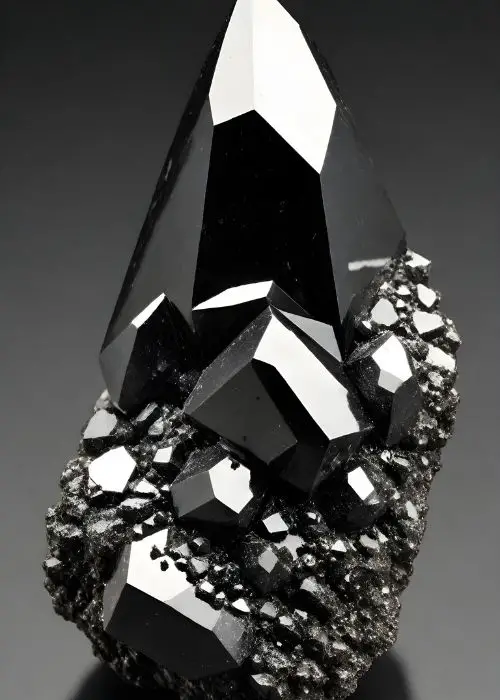How can we use Cassiterite: The Earth’s Dark, Enigmatic Gem
In the depths of the Earth, hidden within granite and pegmatite veins, lies a gemstone of exceptional beauty and intrigue – cassiterite.
With its deep, enigmatic shades ranging from brown to black, cassiterite captivates the eye and the imagination.
Let us journey into the world of this dark gem, exploring its origins, characteristics, and mystical allure.

Origins and Formation
Cassiterite, derived from the Greek word “kassiteros” meaning tin, is a tin oxide mineral renowned for its high tin content.
It forms in high-temperature hydrothermal veins and granite pegmatites, often crystallizing into prismatic structures.
This gemstone’s creation is a testament to the Earth’s ancient geological processes, taking millions of years to form its mesmerizing crystals.
Characteristics and Appearance
What sets cassiterite apart is its remarkable luster and clarity.
When cut and polished, it exhibits a brilliant sparkle, captivating the beholder.
Its dark hues, ranging from coffee brown to jet black, add to its allure, making it a favorite among gemstone collectors and enthusiasts.
Cassiterite’s high refractive index and dispersion give it a fiery brilliance, akin to a distant star twinkling in the night sky.
Symbolism and Significance
Cassiterite’s dark, mysterious beauty has inspired various cultural and symbolic interpretations.
In ancient civilizations, it was often associated with strength, endurance, and protection.
Some believed that wearing cassiterite could ward off negative energies and bring good fortune.
Today, it is cherished not only for its aesthetic appeal but also for its historical significance and rarity.
Uses and Value
In mythological and metaphysical traditions, gemstones are often associated with various healing and spiritual properties, including their effects on the chakras.
While cassiterite is not as commonly discussed in these contexts as other gemstones, we can explore how its properties might align with chakra healing:
- Root Chakra (Muladhara): The root chakra is associated with grounding, stability, and security. Cassiterite’s earthy colors, particularly black and brown, resonate with the root chakra, helping to establish a sense of stability and connection to the Earth.
- Sacral Chakra (Swadhisthana): The sacral chakra is linked to creativity, sensuality, and emotions. Cassiterite’s luster and dispersion can be seen as enhancing creativity and emotional depth, aligning with the sacral chakra’s energies.
- Solar Plexus Chakra (Manipura): The solar plexus chakra relates to personal power, self-confidence, and vitality. Cassiterite’s association with tin, a metal used in ancient times for its protective properties, could be seen as supporting the solar plexus chakra’s role in boosting self-esteem and courage.
Conservation and Ethical Sourcing
As with all gemstones and minerals, ethical sourcing and conservation are paramount.
Mining operations can have environmental impacts, including deforestation and soil erosion.
Responsible mining practices, reforestation efforts, and community engagement are essential in ensuring that cassiterite is sourced sustainably and ethically.
A Gem of Earthly Depths
Cassiterite, with its dark allure and rich history, stands as a testament to the Earth’s treasures.
From its formation deep within the Earth to its transformation into a dazzling gemstone, cassiterite embodies the beauty and mystery of the natural world.
As we marvel at its splendor, let us also remember the importance of responsible stewardship, ensuring that this remarkable gemstone remains a source of wonder for generations to come.
More Crystals and Gemstones

